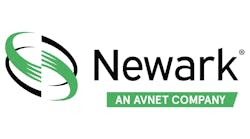By Eric Murphy, ControlGlobal.com Columnist
Over the last few years, factors such as increased environmental awareness and rising energy costs have propelled Green building into the mainstream. Green building strives to improve design, construction and operation practices, so buildings will last longer, cost less to operate, and create more productive environments for workers and residents. But constructing greener buildings is only the beginning. To fully achieve efficiency and stay Green for the long run, building systems need to be monitored and maintained. If it can be measured, it can be managed and OPC supplies the means to do both.
Build Green
Buildings have a vast impact on the environment, human health, and the economy. Adopting green building strategies allows both economic and environmental performance to be maximized, and there is plenty room for improvement. Statistics compiled by the US EPA Green Building Workgroup [1] found that buildings in the US account for: 39 % of total energy use, 12 % of the total water consumption and 68 % of total electricity consumption. Research and experience increasingly demonstrate that when buildings are designed and operated with thought for their lifecycle impacts, they can provide great environmental, economic, and social benefits. Green construction methods can be integrated into buildings at any stage in the building lifecycle, from design and construction, to maintenance and renovation.
Its Not Easy Being Green
The lifecycle of a building can be simplified to Design, Construction, Occupy and Operate. Many green initiatives focus on the early stages of Design and Construction. However installing efficient systems in new buildings and upgrading old buildings is just the start of being green. The longest part of the building lifecycle is the Operate stage. Achieving real savings requires close monitoring and an understanding of what is going on inside the system. Real time data on energy use, changes in hours of operation, and performance of energy consuming equipment needs to be collected and compared against previous data to determine if the building and its systems are operating at peak performance for the life of the building. Even an efficient system can change over time and must be fine tuned to continue achieving savings. OPC provides many advantages as the means for implementing long term monitoring.
Green with Envy
Smart building management requires a building automation control system (BAC) that monitors and operates the technical facilities: heating, ventilation and air conditioning, access control and lighting. These various subsystems come from many manufacturers using a range of different protocols. As a result, considerable time and costs would need to be invested in developing and maintaining many special software interfaces in order to integrate the components. OPC has the enviable distinction of being the standard for providing real-time data access for industrial automation industries. Industrial processes and manufacturing sites produce tremendous amounts of real-time data, which requires transformation into useful information. As with other industry verticals, building automation systems have a wide range of proprietary protocols and several common interfaces such as BACnet, LonWorks® and Modbus. OPC servers are available for all these protocols, and provide connectivity to OPC based advanced applications, such as decision support systems, historical analysis, process optimizations and energy calculations and other high level information processing systems. With OPC its easy being green.
Stay Green with OPC
OPC provides standardized system connectivity for existing and upgraded building equipment and controls. Advanced levels of automation, integration of systems, enterprise-level connectivity, and new generation of efficient and intelligent hardware bring real advantages that businesses can leverage to make buildings more productive and less expensive to operate. OPC also standardizes the integration of facility management systems, building automaton systems and business management applications to perform the complex task of enterprise energy management. Energy savings are realized when building data can be captured, stored and analyzed. Information from the compiled data leads to actionable recommendations to be implemented. Such solutions would allow organizations to use existing systems to document, track and control the use of energy. Simplified access to real time data and enterprise connectivity leads to benefits such as:
- Evaluating and improving operational and control schedules, set points and optimization strategies to user needs
- Continuously analyzing potential performance and historical system changes.
- Engineering analysis of peak demand usage and identify energy saving opportunities.
- Improved management systems for preventative maintenance.
Greenbacks from Green BAC
The question is no longer whether to automate buildings, but how to ensure the greatest return on this green investment. In order to improve the use of existing systems, timely access to data is required to determine how best to control building systems and manage energy usage. OPC allows users to integrate real-time and historical building system information into existing business applications for better control of their facilities and energy requirements. OPC and BAC leads to greener buildings, energy savings and better economic returns.
Bibliography:
[1] Buildings and the Environment: A Statistical Summary U.S. Environmental Protection Agency Green Building Workgroup. December 20, 2004
(http://www.epa.gov/greenbuilding/pubs/gbstats.pdf)


